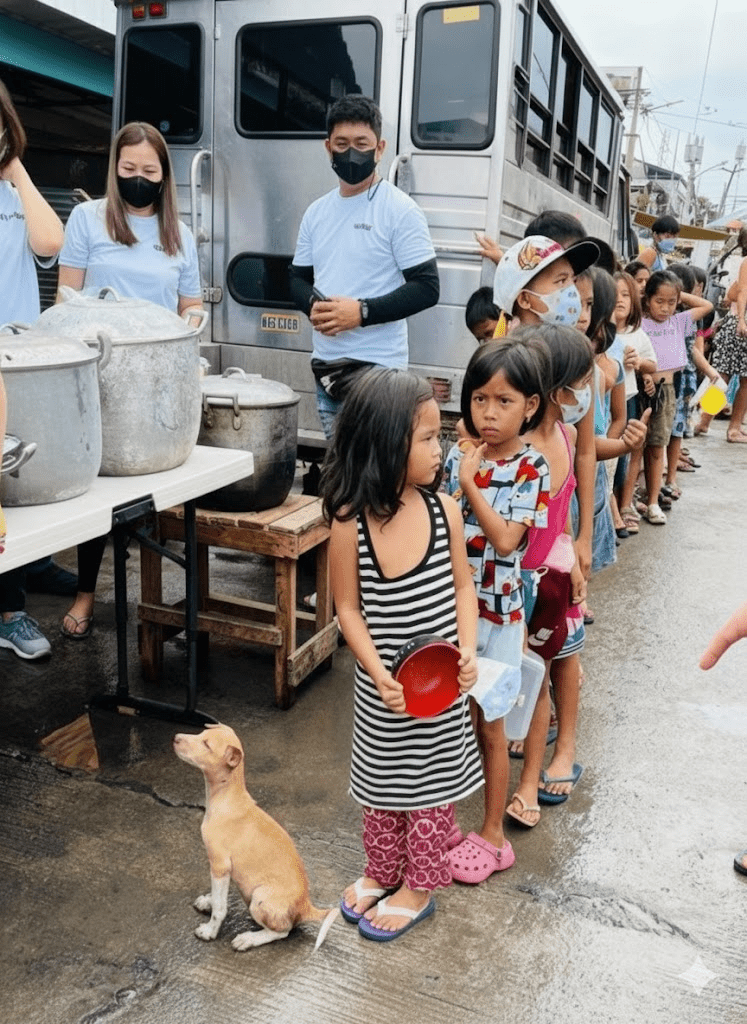The sweltering heat of a Southeast Asian afternoon bore down on a scene both heartbreaking and hopeful. A line of children, their faces a mix of anticipation and weariness, stretched along a dusty street. They clutched worn bowls and plates, their small frames testaments to lives lived on the fringes of plenty. Amidst their quiet murmurs and shuffling feet, an unexpected figure stood out: a small, unassuming puppy, its light brown fur blending with the muted tones of the street. It sat patiently, not barking, not begging, but simply waiting, its eyes fixed on the makeshift food station where volunteers diligently served warm meals from large, steaming pots. This wasn’t just a queue for food; it was a tableau of resilience, a silent narrative of shared vulnerability between humans and animals, all bound by the universal language of hunger and the glimmer of hope for a single, sustaining plate.

At first, the volunteers hadn’t even noticed the puppy. Their focus was entirely on the children, ensuring each received a portion. But as the line slowly advanced, one young girl, barely five years old, paused. Instead of stepping forward, she gently nudged her small, empty bowl towards the puppy. A ripple of confusion went through the line; was she giving up her meal? The volunteers exchanged concerned glances, prepared to intervene, thinking the child might be afraid or perhaps trying to give her portion away. They had no idea the simple gesture was about to spark an unexpected chain of events.

What transpired next was truly remarkable. The puppy, instead of eating from the offered bowl, gently nudged it back towards the girl with its nose. Then, it looked up at her with an intensity that seemed to transcend its animal nature, before glancing pointedly towards the serving station. It was as if the puppy was communicating, not just to the girl, but to everyone witnessing the scene: “We are all in this together.” This silent exchange, witnessed by the other children, transformed the mood from passive waiting to quiet wonder.

From that day forward, the “puppy of hope” became a silent fixture at the weekly food distribution. Children would excitedly point him out, and he would always be there, a quiet presence at the front, reminding everyone of the simple, universal need for kindness. The volunteers, deeply moved by the puppy’s unexpected role, ensured he always received a small, extra portion after all the children had been fed, a testament to the fact that compassion, once sparked, knows no bounds. This small, unkempt creature became a powerful, unexpected symbol of unity and the enduring spirit of hope in the face of hardship.






